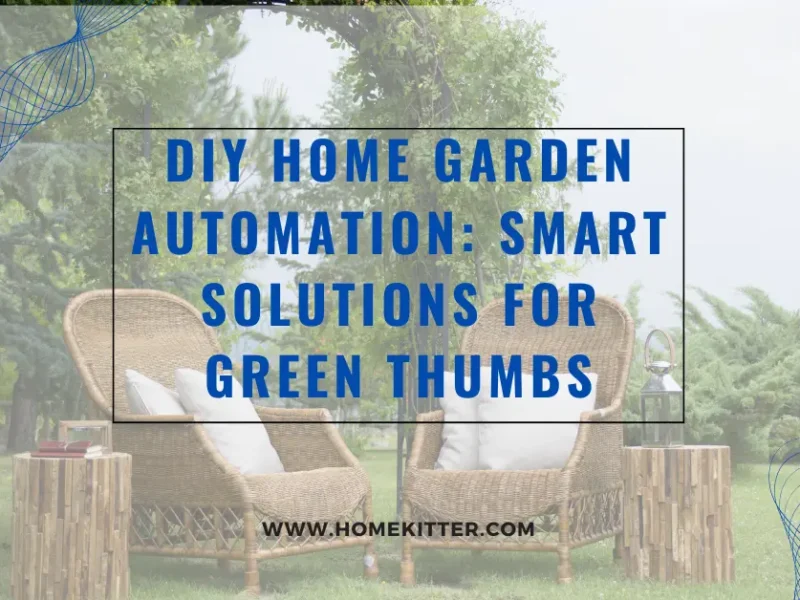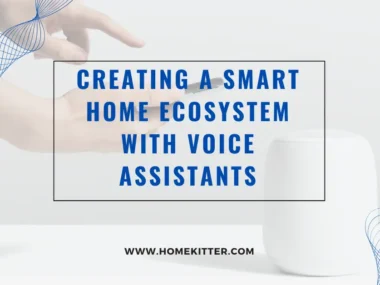Table of Contents
DIY Home Garden Automation. Gardening has always been said to have a ton of therapeutic benefits. As a green thumb (someone who is exceptionally talented at gardening and making plants grow), you’ve probably always had to weed on your hands and knees, water your garden with a watering can, and spend more time than you have to tend to your garden so your plants don’t die.
As cathartic as the gardening process might be for you, the stress of executing these tasks manually could prove to be a bit much, which might discourage you from tending to your dear plants on days when you just don’t have the strength for physical activities.
However, with the advent of smart technology, as a green thumb, you can now execute all the tasks required to keep your plants alive without stress. There are automated robots that can mow your grass, smart sprinklers that you can set to turn on/off at specific times of the day so your plants have enough water to survive, and so on.
If set up using the right smart gardening devices, Garden Automation can be a smart solution for green thumbs who consider gardening as something they can’t do without.
Read this guide on DIY Home Garden Automation: Smart Solutions for Green Thumbs to learn about certain beneficial smart gardening devices, their uses, and the overall benefits of having an automated home garden.
DIY Home Garden Automation: Smart Gardening Devices
There are numerous smart gardening devices that you can use to design an efficient automated garden, so you can nurture your plants with ease.
1. Smart Irrigation Systems: These smart gardening devices can help you to water your plants at specific times giving them too much or too little water. They use weather data and soil moisture sensors to determine when your plants need water and give it to them.
A good example of a smart irrigation system is the Rachio 3 Smart Sprinkler Controller.
2. Weather Sensors: These devices work in collaboration with your smart irrigation systems, by measuring temperature, humidity, and rainfall, and using this information to alter watering plans.
3. Smart plant sensors: These sensors monitor plants’ wellness and notify you when your plants need tending. You can incorporate them into your current smart home automation, and operate them with a smartphone application.
4. Smart lawn mowers: Instead of going through the stress of mowing your lawn every week, these smart devices help to keep your yard looking neat every day.
5. Smart security cameras: While automating your home garden to improve efficiency, you need to also work on protecting your garden. You can install smart security cameras in your garden so you can monitor the space whether you are at home or not.
Tips for Setting up an Efficient Home Garden Automation
1. Learn the basics of gardening: Before proceeding to automate your home garden, you should begin by learning the basics of conventional gardening, as this will help you understand the smart gardening devices that can help you garden more efficiently.
2. Pick the right plants: In the process of setting up a smart garden, select plants that are suited for indoor gardening and thrive in enclosed spaces.
3. Get smart gardening devices: Get devices such as smart planters, smart irrigation systems, and LED grow lights to help you garden more efficiently. Also, ensure to get smart plant sensors that can help you monitor your plants’ growth and notify you if your attention is needed.
4. Harvest: Lastly, ensure to always harvest your plants once they are ready, to aid continuous growth.
Benefits of Home Garden Automation
1. Preservation of water: The conventional way of watering plants tends to wastewater, a flaw that smart gardening has fixed thanks to smart irrigation systems that help moderate the quantity of water used.
These systems use soil sensors to track the moisture levels of the soil and give the plants the precise quantity of water that they need, thereby preserving water.
2. It saves time and energy: An automated garden helps you save time and energy, as it spares you from the stress of having to show up now and then to water your plants or do some weeding.
Using smart irrigation systems, you can automate tasks such as watering so you can spend your time doing other productive things without your plants suffering in your absence. Also, instead of expending energy on strenuous tasks like cutting the grass, there are automated robots that can get the job done on their own.
3. Nutrition: When you grow fruits and vegetables efficiently in your smart garden using various smart gardening devices, they tend to grow well and supply you with fresh foods that are way better than store-bought ones.
But with homegrown food, the experience is better. You can grow all kinds of food in your smart garden.
4. It limits harm to the environment: Various eco-friendly practices come with the adoption of smart gardening. One of them is the use of organic and natural fertilizers for your plants to avoid harming the environment.
5. More harvest: With an automated garden that features smart irrigation systems that give your plants the exact quantity of water that they need to flourish, there is bound to be an increase in your harvest.
To Round it off:
As a green thumb who spends a lot of their time tending to a home garden, using several smart devices to automate the space can really help you not just to manage it better but also to maximize its output.






